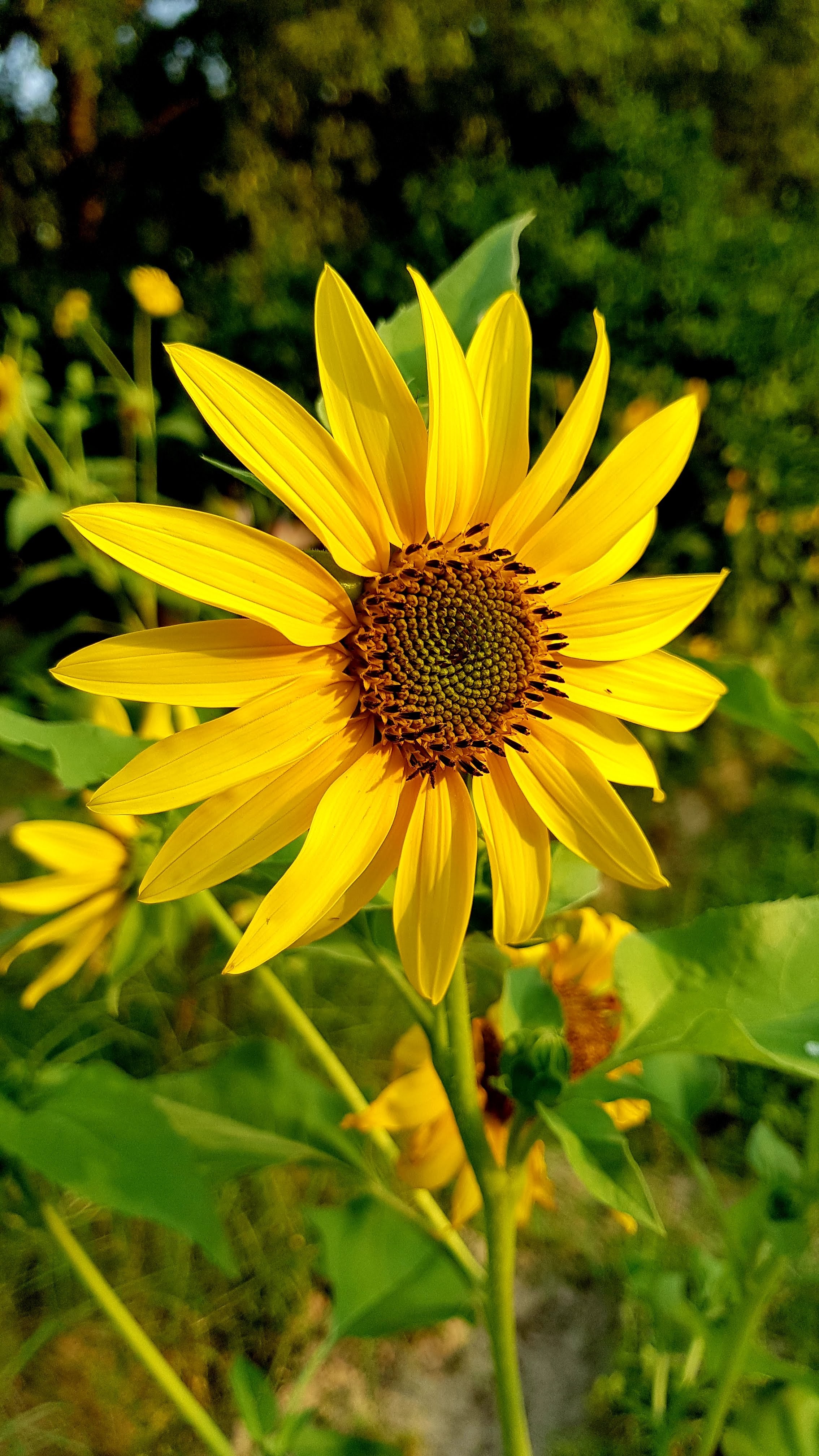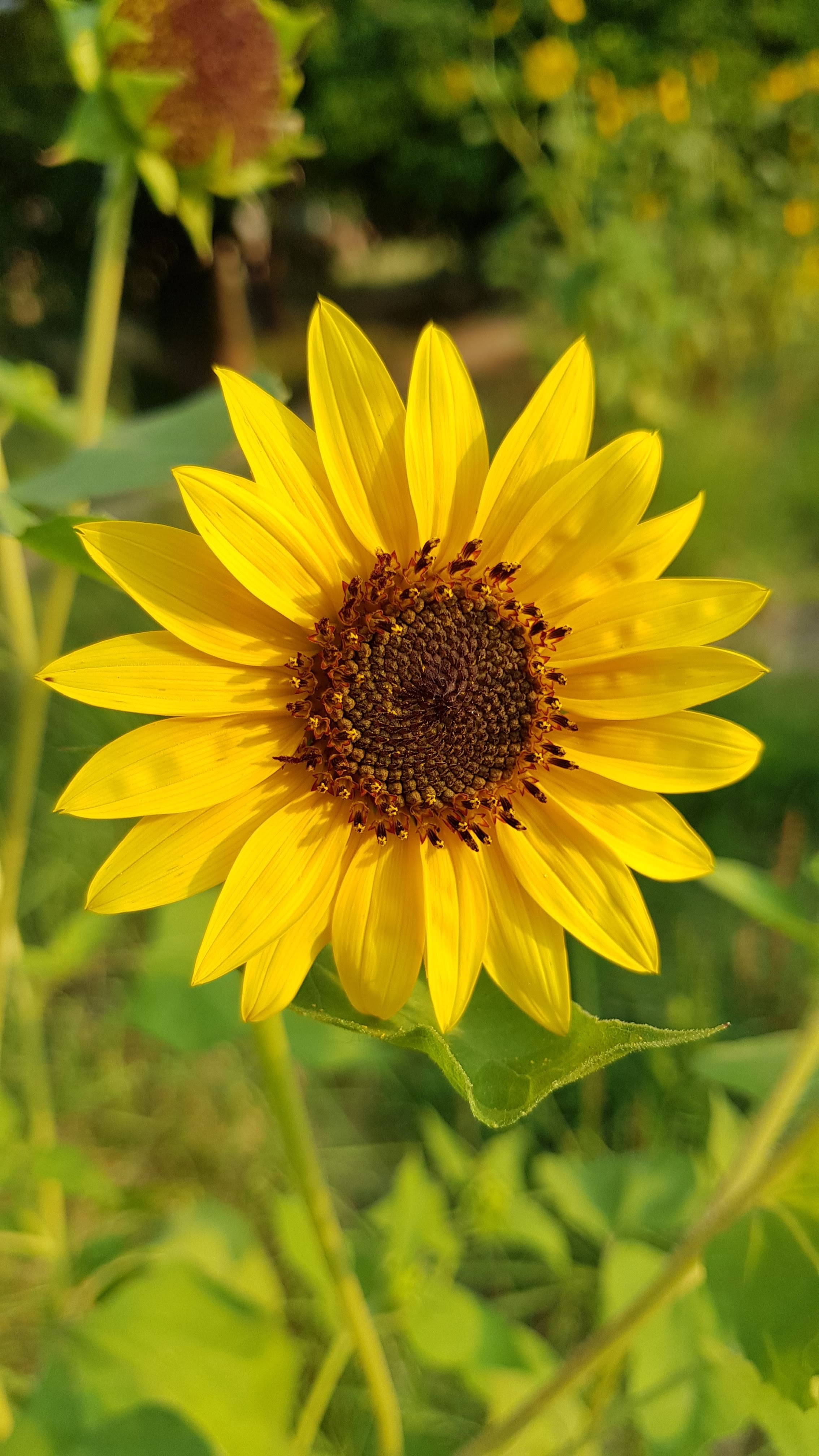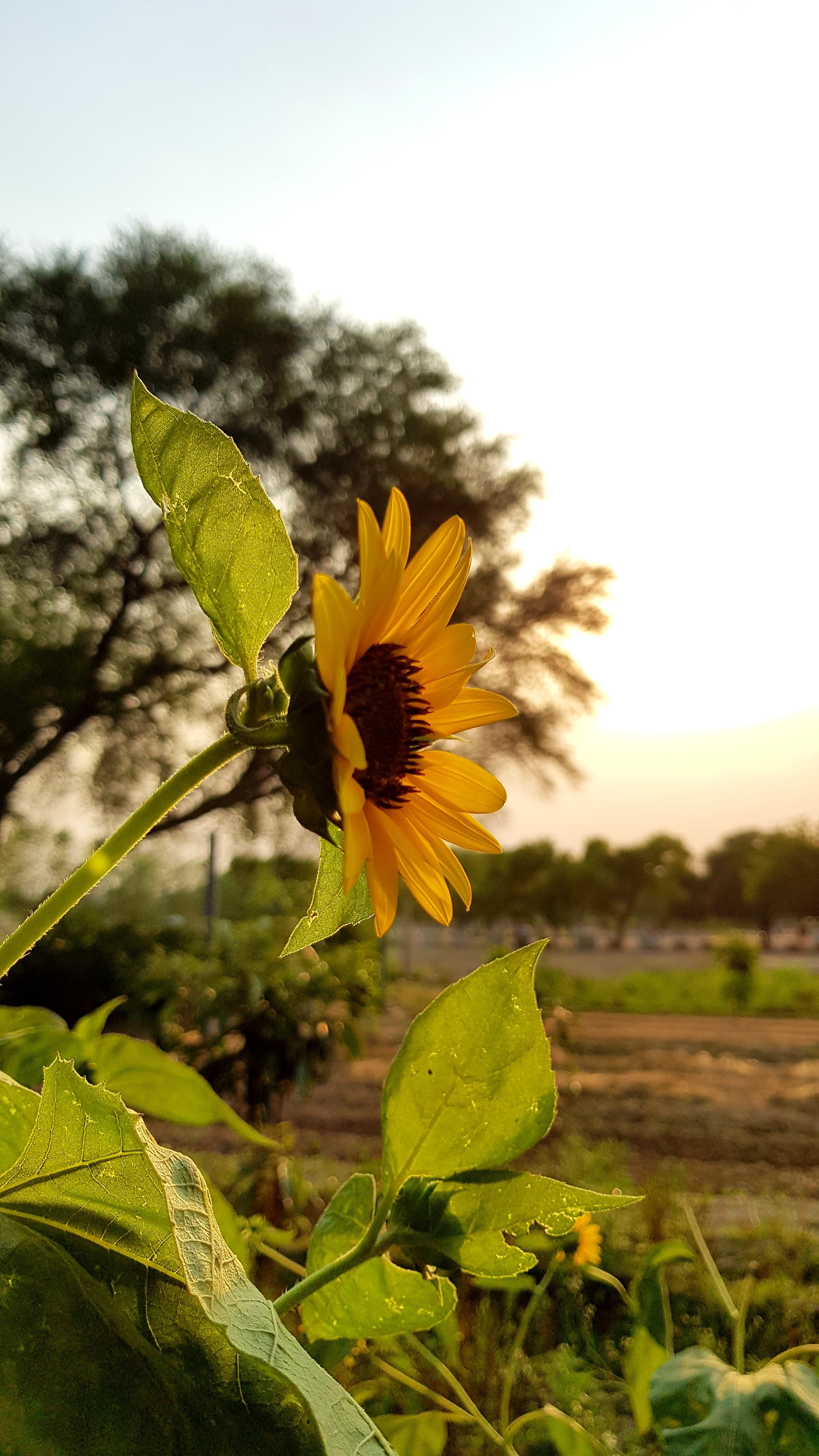Common Sunflower
Species
Families
Local Names
Genus
Native/Introduced
DNA Barcode
Description
The common sunflower (Helianthus annuus) is a large annual forb of the genus Helianthus grown as a crop for its edible oil and seeds. This sunflower species is also used as wild bird food, as livestock forage (as a meal or a silage plant), in some industrial applications, and as an ornamental in domestic gardens. The plant was first domesticated in the Americas. Wild H. annuus is a widely branched annual plant with many flower heads. The domestic sunflower, however, often possesses only a single large inflorescence (flower head) atop an unbranched stem.
The binomial name Helianthus annuus is derived from the Greek Helios 'sun' and anthos 'flower', while the epithet annuus means 'annual' in Latin.
Sunflower seeds were brought to Europe from the Americas in the 16th century, where, along with sunflower oil, they became a widespread cooking ingredient.
A common misconception is that flowering sunflower heads track the Sun across the sky. Although immature flower buds exhibit this behaviour, the mature flowering heads point in a fixed (and typically easterly) direction throughout the day. This old misconception was disputed in 1597 by the English botanist John Gerard, who grew sunflowers in his famous herbal garden: " some have reported it to turn with the Sun, the which I could never observe, although I have endeavored to find out the truth of it." The uniform alignment of sunflower heads in a field might give some people the false impression that the flowers are tracking the Sun.
This alignment results from heliotropism in an earlier development stage, the young flower stage, before full maturity of flower heads (anthesis). Young sunflowers orient themselves in the direction of the sun. At dawn the head of the flower faces east and moves west throughout the day. When sunflowers reach full maturity they no longer follow the sun, and continuously face east. Young flowers reorient overnight to face east in anticipation of the morning. Their heliotropic motion is a circadian rhythm, synchronized by the sun, which continues if the sun disappears on cloudy days or if plants are moved to constant light. They are able to regulate their circadian rhythm in response to the blue-light emitted by a light source. If a sunflower plant in the bud stage is rotated 180°, the bud will be turning away from the sun for a few days, as resynchronization with the sun takes time.
When growth of the flower stalk stops and the flower is mature, the heliotropism also stops and the flower faces east from that moment onward. This eastward orientation allows rapid warming in the morning and, as a result, an increase in pollinator visits. Sunflowers do not have a pulvinus below their inflorescence. A pulvinus is a flexible segment in the leaf stalks (petiole) of some plant species and functions as a 'joint'. It effectuates leaf motion due to reversible changes in turgor pressure, which occurs without growth. The sensitive plant's closing leaves are a good example of reversible leaf movement via pulvinuli.
Uses
Sunflower "whole seed" (fruit) are sold as a snack food, raw or after roasting in ovens, with or without salt and/or seasonings added. Sunflowers can be processed into a peanut butter alternative, sunflower butter. It is also sold as food for birds and can be used directly in cooking and salads. Native Americans had multiple uses for sunflowers in the past, such as in bread, medical ointments, dyes and body paints.
Sunflower oil, extracted from the seeds, is used for cooking, as a carrier oil and to produce margarine and biodiesel, as it is cheaper than olive oil. A range of sunflower varieties exist with differing fatty acid compositions; some "high-oleic" types contain a higher level of monounsaturated fats in their oil than even olive oil. The oil is also sometimes used in soap. After World War I, during the Russian Civil War, people in Ukraine used sunflower seed oil in lamps as a substitute for kerosene due to shortages. The light from such a lamp has been described as "miserable" and "smoky."
The cake remaining after the seeds have been processed for oil is used as a livestock feed. The hulls resulting from the dehulling of the seeds before oil extraction can also be fed to domestic animals. Some recently developed cultivars have drooping heads. These cultivars are less attractive to gardeners growing the flowers as ornamental plants, but appeal to farmers, because they reduce bird damage and losses from some plant diseases. Sunflowers also produce latex, and are the subject of experiments to improve their suitability as an alternative crop for producing hypoallergenic rubber.
Traditionally, several Native American groups planted sunflowers on the north edges of their gardens as a "fourth sister" to the better-known three sisters combination of corn, beans, and squash. Annual species are often planted for their allelopathic properties. It was also used by Native Americans to dress hair. Among the Zuni people, the fresh or dried root is chewed by the medicine man before sucking venom from a snakebite and applying a poultice to the wound. This compound poultice of the root is applied with much ceremony to rattlesnake bites.
However, for commercial farmers growing other commodity crops, the wild sunflower is often considered a weed. Especially in the Midwestern US, wild (perennial) species are often found in corn and soybean fields and can decrease yields. The decrease in yield can be attributed to the production of phenolic compounds which are used to reduce competition for nutrients in nutrient-poor growing areas of the common sunflower.
Sunflowers can be used in phytoremediation to extract toxic ingredients from soil, such as lead, arsenic and uranium, and used in rhizofiltration to neutralize radionuclides and other toxic ingredients and harmful bacteria from water. They were used to remove caesium-137 and strontium-90 from a nearby pond after the Chernobyl disaster, and a similar campaign was mounted in response to the Fukushima Daiichi nuclear disaster.











































































































































